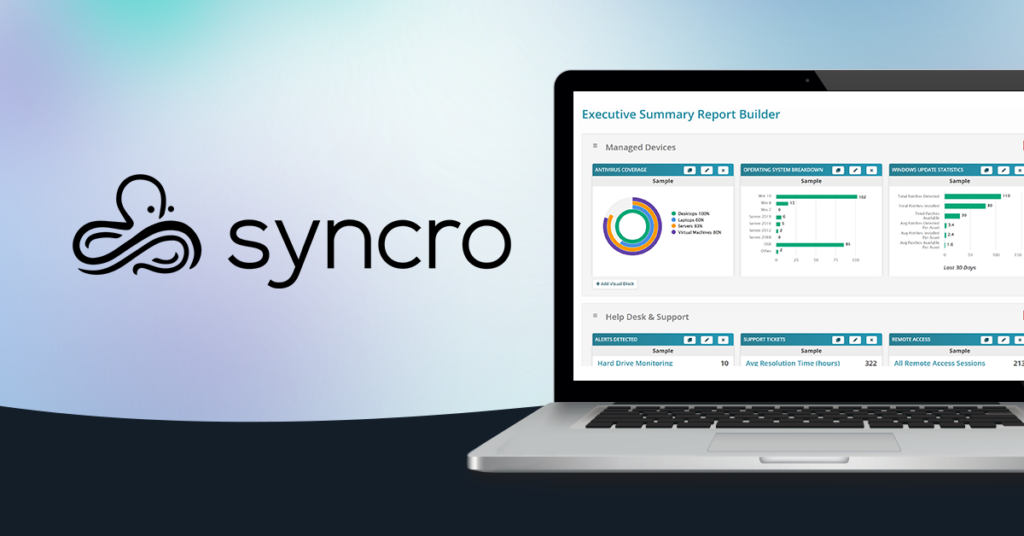Today we have Jennifer Tribe from Syncro talking about finding your flow as an MSP leader…


Jennifer Tribe is host of the Workflow for MSPs podcast. She serves as Director of Content at Syncro, an all-in all-in-one RMM, PSA, and remote access tool that helps managed service providers run more profitable businesses.
Great athletes often talk about finding their “flow” or “rhythm” — a state where they essentially let their instincts take over to help them achieve their maximum performance. Drawing from their own training and experience, they’re able to slip into a state where it seems like they don’t even have to think about what they’re doing.
This sense of flow can be so powerful that it’s been linked to athletes being able to elevate their performance, even serving as a way to predict how they’ll perform in a competition.
While this sounds great for athletes, is it really applicable to your own job of running an MSP? As Cameron Norsworthy, performance coach and CEO of The Flow Centre explained in a recent podcast interview, you can achieve flow in business too.
What is flow?
Both in and outside of sports, flow can be described as an “optimal state” of function — where we maximize our performance, engagement, and even our ability to create meaningful experiences.
According to Cameron, flow has three distinct characteristics, the first being absorption in the moment. “We might be doing a task and we see everything within that task, but we’re not distracted by stuff outside that task. At deeper levels of flow, we might have a high level of connection, we might have time transformation, loss of self-consciousness. All the sort of higher executive cognitive functions start to sort of dissolve the more and more absorbed we become in the moment.
“The second key aspect of flow is there’s this high sense of control, but there’s an effortlessness to it. It’s not a constrained type of control. It’s an effortless sense of control. And the last one is that it’s intrinsically rewarding. It feels good. It keeps the experience going. And on reflection, it’s enjoyable regardless of the results or the outcome.”
Thanks to these aspects, it’s easier to identify other phrases that we might associate with flow, like “being in the zone” or feeling “wired in.” But regardless of what you’re doing, true flow occurs when you’re fully absorbed in your task with effortless control — and it feels good. You’re not straining or stressing.
So how does this happen? Cameron explains that our brains actually have two distinct operating systems, which he refers to as the “thinking brain” and the “being brain.” While the thinking brain offers a lot of value in helping us achieve higher functions, “it’s also extremely slow and very linear in its logical sequential type of thinking. So there’s this great flexibility of it but extremely slow when it comes to processing.”
The “being brain,” on the other hand, isn’t flexible. It’s essentially pre-programmed in its operations. But this makes it extremely fast at what it does—something like a million times faster than the thinking brain.
“Ordinarily we go through life with that thinking brain dominating our experience,” Cameron says. “In flow, it’s sort of a little bit of the reverse. We’re in that being brain and we might use the faculties of that thinking brain as and when we need it, but the being brain is captaining the ship.”
Finding flow in the business world
Of course, as an MSP leader, it’s easy to look at this and think that you’re never going to be in a position where your “being brain” would be in charge. But as Cameron explains, it’s quite possible to achieve that sense of flow in business — because the foundations of what you need to get to that flow state are already there.
“All the stuff that we’ve experienced, all the stuff that we’ve learned that’s become muscle memory, […] the culture we inherited from the first business we worked in, the subtle values and skills we’ve picked up from managers we’ve worked under, all the things we see from great leaders that we want to sort of epitomize that we don’t necessarily think about, but we’ve just absorbed through books, through observation, that all gets stored in our being brain. And that’s really where our intuition comes from, that kind of sum of our personal experience on this planet.”
Essentially, finding flow in the business world comes down to intuition. Relying on the instincts and the knowledge you’ve gained from past experiences and learning opportunities can help leaders enter that flow state, rather than try to overanalyze every possible situation.
As Cameron describes it, this can lead to the “ability to operate through our intuition and to be able to look back and go, at that time, I know I made the best decision possible and we’re not overthinking it and stressing about it. So that relationship with our intuition, whether that’s in a negotiation, whether that’s just we haven’t got a lot of time but we need to answer that email, whether that’s do I hire this person, do I fire this person, all those sort of day-to-day decisions, it’s quite important that we develop a strong relationship with our intuition and we train that relationship.”
Finding your flow state
It can still be challenging to figure out how to get into a flow state in your own role as you guide your MSP. While many people use external influences such as background music or caffeine to influence their performance, Cameron argues that more sustainable strategies rely on psychological flexibility, or “training our brain to prioritize flow.”
To achieve this, Cameron recommends three key strategies for achieving that flow state — both for yourself, and those you manage.
- Create the optimal level of challenge: “[Match] up the difficulty level with a person’s skill. If the difficulty level is too low and the skill is too high, someone’s going to get bored. They’re going to get bored, demotivated, distracted, and so forth. If the difficulty level is too high for the skill level, then we’re going to be nervous and anxious and distracted and having a conflict.” Clear task goals and instantaneous feedback can help gauge whether a task offers the appropriate level of challenge for each individual.
- Strengths: “Flow is often found when we’re using our strengths because we feel confident and we’re willing to just play with the edges of moving out of being in that over controlled phase.” Generally speaking, tasks that draw on someone’s strengths are better aligned with their goals, giving them more motivation to work on that task.
- Focus time: Giving people a few hours where they can focus on their core work — rather than needing to respond to emails and other requests — is crucial for enabling flow and allowing top-quality work to get done. Structured, self-managed focus time is vital. Distraction and conflict can undermine flow.
Achieving true flow
“Are we in flow? Are we all working at our best at the moment? And what would need to change for that to happen?”
These are the questions Cameron recommends that every MSP leader ask themselves. While KPIs can be important, taking a step back to consider if your work environment is enabling everyone to perform at their peak capacity and “flow” can be just as important. By identifying changes you can take to create sustainable performance, you can build a stronger culture that maximizes everyone’s strengths — where you and your team members will regularly be able to achieve true flow.


